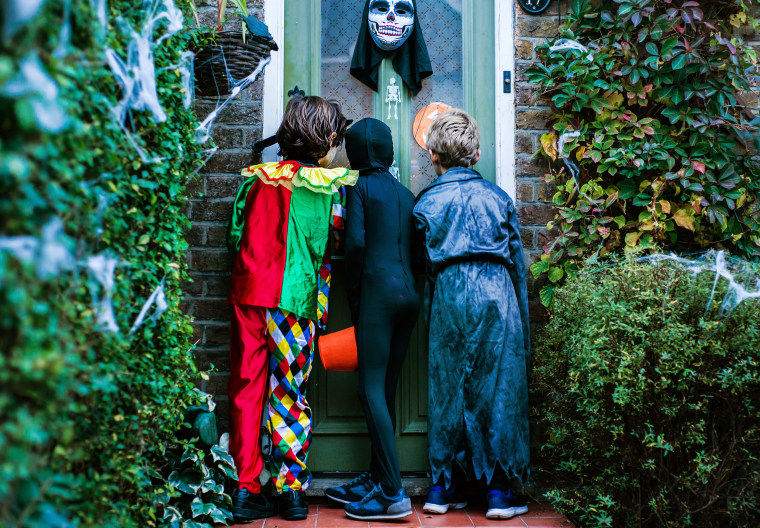There are many myths and legends that surround Halloween night, and some are even rooted in truth and in history. Others, however, are not.
For example, the origin of the “poisoned Halloween candy” story that returns every year to bedevil parents dates back to 1964 in Long Island, New York, when a disturbed housewife there handed out treats containing arsenic. The woman, 47, claimed it was a “joke” and that she did it because she thought some of the trick-or-treaters who rang her doorbell were “too old.” She was later committed to a hospital for examination.
In Pasadena, Texas, 10 Halloweens later, a father killed his 8-year-old son after putting cyanide in Pixy Stix. (The man was subsequently put to death for the murder in 1984.) And, of course, there’s the razor-blade-in-the-apple tale, which actually cannot be traced back to one specific incident. Sociologists deem that one mere urban legend.
More recently, a new tall tale has been visited upon us, once again trick-or-treating disguised as fact to hide its fictional face. Police and parents across the country are currently freaking out that those of us who enjoy a marijuana edible gummy now and then will maliciously hand them out to jovial, unsuspecting trick-or-treaters on Halloween night.
This is a ridiculous and unfounded claim. If anything, this is just another way for the anti-weed apologists to demonize marijuana yet again.
Let me clear up one thing here: No one, absolutely no one, will be handing out marijuana edibles en masse to unsuspecting minors this Halloween.
How can I be so confident about that? Well, there are many reasons. Firstly, edibles that contain THC (the psychoactive component of marijuana) aren’t cheap. Depending on what you buy, they can run between $10 and $20 —and even more than that in some places. Even CBD edibles — which lack the psychoactive component of marijuana and are more readily commercially (if not always legally) available — start at $1.50 per tiny, unwrapped piece. Nobody who purchases them is going to be giving them away like some cheap candy corn or Hershey's Kisses.
Secondly, edibles with THC purposefully don’t resemble candy for kids — especially in places such as Colorado and Washington state where such products are legal. There are laws banning any edibles shaped like animals, fruits, humans (which is weird anyway) or anything else that would entice a child to grab and eat one assuming it was regular candy.
So edibles that come from marijuana dispensaries are not cute at all — they’re bricks and blobs. If fact, they’re less appetizing than your average adult vitamin chewy from the health food store.
And, like those vitamins, both THC-infused and many CBD-infused edible gummy typically don’t come in wrappers but are sold as 10 or more in a sealed, container. The THC-infused ones are additionally slapped with warning and safety labels that say things like, “For use by adults 21 and older. Keep out of reach of children.”
All of these precautions is why it’s a good idea for more states to legalize marijuana across the board: You can’t regulate a black market. So if there are weed providers packaging edibles in misleading-but-familiar wrappers in places where they are still criminalized — such as Iowa, Virginia and Pennsylvania, for example — that’s because they have to hide the edible from law enforcement to sell them to adults, not to dole them out to unsuspecting kids in costumes. Legalization removes that incentive entirely.
Now, does all the safety steps taken by the industry mean that there aren’t bad people in the world? Of course there are. (I am increasingly convinced there are mostly bad people in this world.) But growing up, there was a solid rule while trick-or-treating in my neighborhood of East Los Angeles to protect us from them: Don’t take fruits, baked goods, or anything that isn’t in its original wrapping. It’s sound advice. And, as my parents did, just inspect your kids’ goodie bags and winnow out anything — absolutely anything — that’s questionable before the kid dives in face first.
And if your kid is exposed to an edible, you might want to check your own stash instead of their plastic pumpkin head: A 2016 study in JAMA Pediatrics that looked at accidental marijuana exposure in kids in Colorado after legalization found that the major source of exposure was parents, followed by other family members, friends and babysitters. (The American Academy of Pediatrics recommends storing edibles as you would medications or other toxic things — up high or under lock and key — and to avoid ingesting them in front of your children. Safety starts with mom and dad.)
If you want to be scared of something on Halloween night, it shouldn’t be edibles in your kid’s treat bag but drunken drivers on the road. According to the U.S. Department of Transportation, there’s a clear drunk-driving spike on Halloween – crashes, serious bodily injuries and pedestrian deaths mount every Oct. 31. That means parents should worry about boozers behind the wheel, not potheads pounding pizza.
Halloween, of course, is a time of fear: ghouls, goblins, haunted houses and the sheer volume of leftover candy that will be around to tempt you. But it’s not a time to stoke fear about things that aren’t based in evidence and truth — and definitely not a time to demonize marijuana yet again.
So fear demons, drunk drivers and Dum Dums, but there’s no need to fear that edibles will be given out willy-nilly to trick-or-treaters on Halloween



